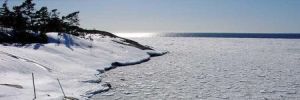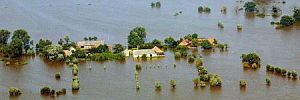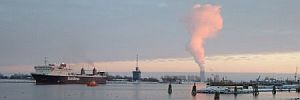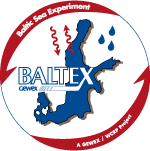| Research Objectives
BALTEX scientists work in four major research fields, which are highly interrelated:
|
Understanding the water and energy cycle

|
The main research question concerning the water and energy cycle of the Baltic Sea basin has been: What is the balance between precipitation and evaporation, and between the in- and outflows through the Danish straits to the Skagerrak and North Sea? A basin-wide direct measurement of these processes is impossible, so that scientists use up-to-date numerical models to simulate the water and energy cycle. As climate changes, the different components of the water and energy cycles also change, with different consequences for different regions of the Baltic Sea basin.
|
|
Analyzing climate variability and change

|
The Baltic Sea basin has undergone drastic changes since its current manifestation about 7000 years ago (see Geological History). Our measured climatic data go back about 200 years, with indirect indications on environmental conditions reaching further back. So we know that the climate in the Baltic Sea basin has undergone quite large variations during the past. What we would like to know is what caused the past variations and how will the regional climate of the Baltic Sea basin be in the future. These questions are approached using regional climate models, which have a much higher resolution that global climate models. The results are checked using simulations of the past, which are checked against real observations. If the model results and the observations are in good agreement, we can trust the model to a certain extent. The challenge is to account for natural climate variations and separate them from the warming caused by human greenhouse gas emissions.
|
|
Improved tools for water management

|
Recent floods and devastating storms hitting the basin have increased the public and political awareness of the risks that climate change and associated extreme weather events may imply on Northern Europe. On the other hand, water resources used for energy production and recreation have a high economic value for the Baltic Sea region. To minimize the effects of extreme events, and to improve the efficiency of a sustainable and environmentally sound use of water resources, is the challenge for water management. BALTEX scientists develop numerical models which help to estimate the future frequency of extreme events, and which simulate what might happen under extreme weather conditions, helping to improve precautionary measures, and to efficiently manage the water resources in the catchment basin.
|
|
Biogeochemical processes and fluxes under changing conditions

|
The environment of the Baltic Sea basin is heavily under pressure by human activities. 85 Million people live in the basin, most of them in the industrialized southern part. Eutrophication, i.e. the excessive fertilization of aquatic ecosystems, and the release of hazardous substances from industrial sources and ships, are major problems for the environment of the Baltic Sea basin. Climate change can significantly alter the inputs into the environment; however, we do not know how. BALTEX scientists are working on models which are able to simulate the impact of current and future eutrophication and pollution on aquatic and terrestrial ecosystems.
|
|

